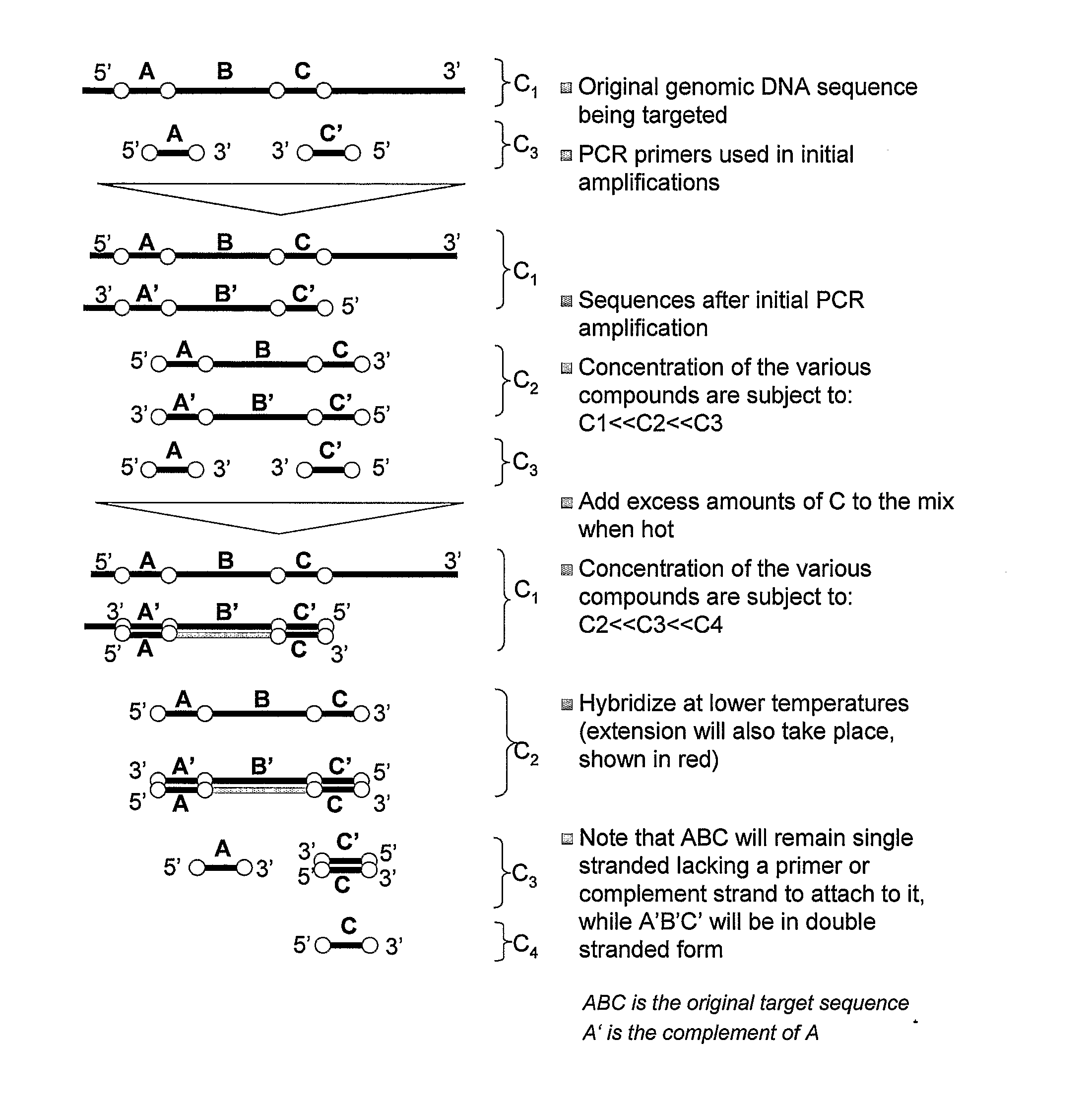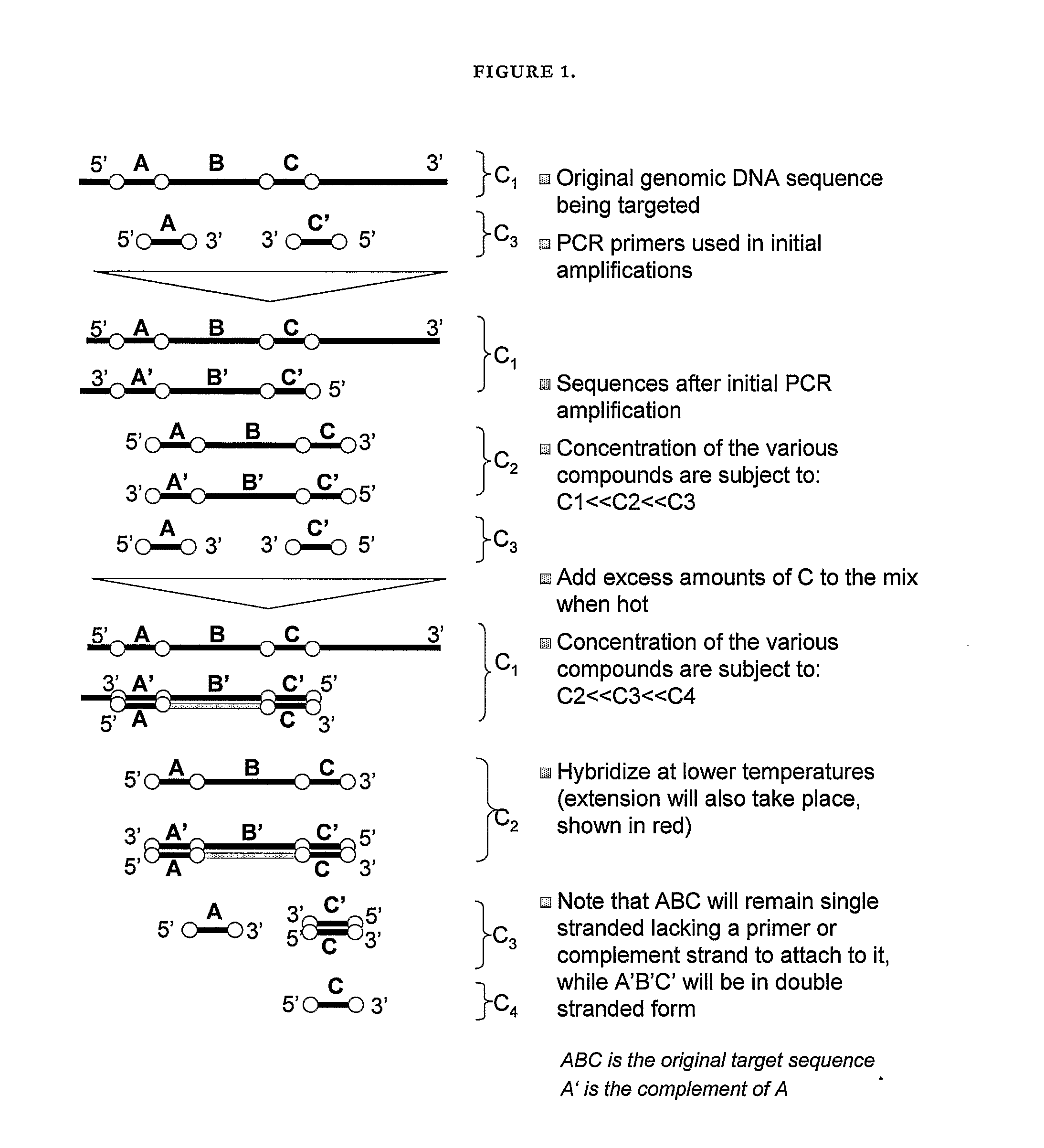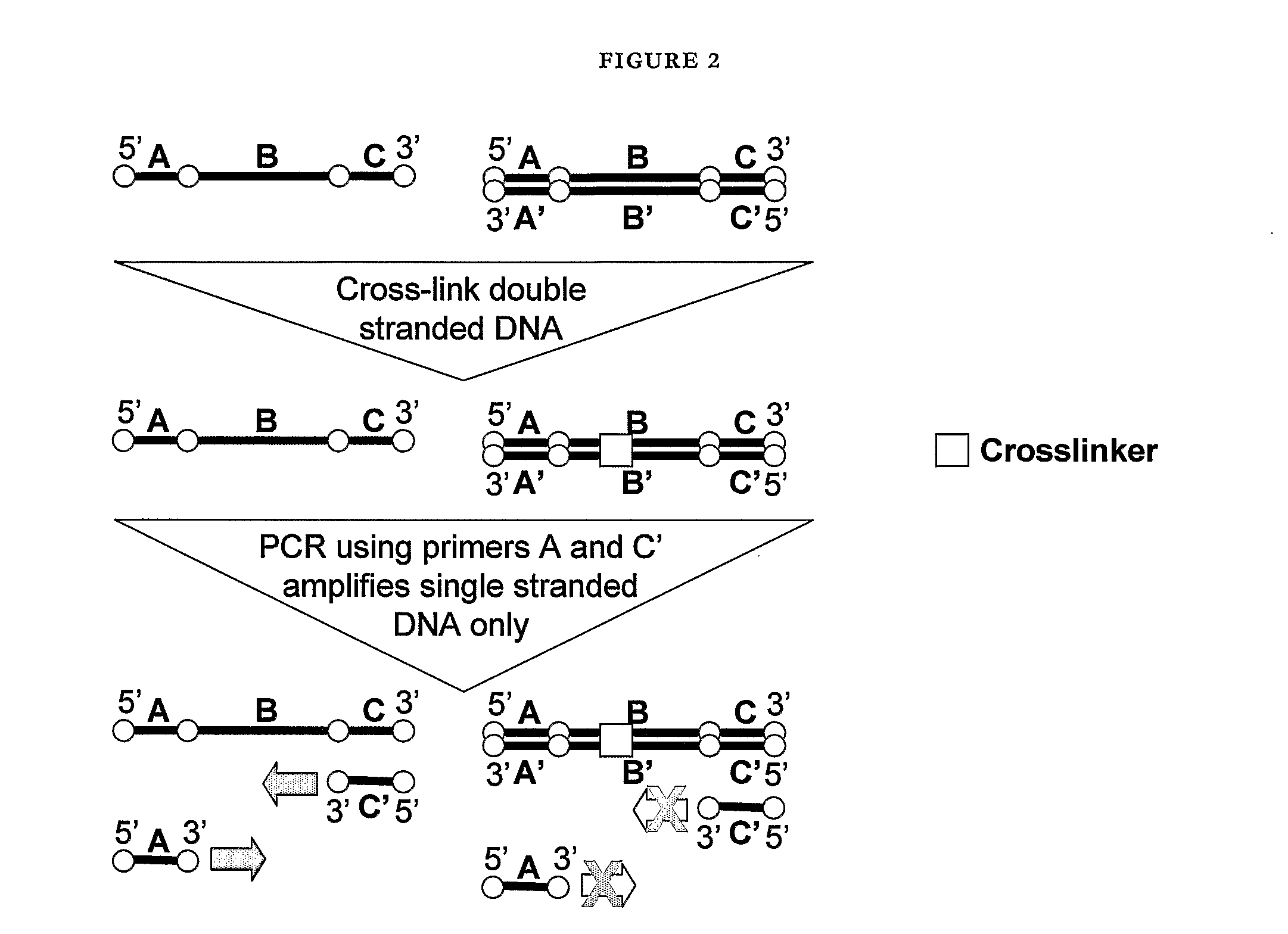Nucleic acid detection
a technology of nucleic acids and detection methods, applied in the direction of fluid pressure measurement, liquid/fluent solid measurement, peptides, etc., can solve the problems of misbalanced products generated by subsequent extension, and achieve the effect of accurate determination of differences and accurate detection of the amount of nucleic acids
- Summary
- Abstract
- Description
- Claims
- Application Information
AI Technical Summary
Benefits of technology
Problems solved by technology
Method used
Image
Examples
example 1
Detection of the amount of a Chromosome 18 sequence relative to a Chromosome 10 sequence using biotin immobilization of the reference
[0120]The methods described herein are applied to the detection of trisomy 21 in maternal serum as follows. The target and reference probes used are as follows (nomenclature is as in FIG. 3):
Target sequence from 18q:
(SEQ ID NO: 2)5′-GAGGAGACCAGGGGCTCAAGTGAGCCCCTCCGAGGGGATGGCTGTGCTGCAGCAGAGATATGACTAGAGACAACCCTCCTGGGCCGACTGCTAGAGAACAGCAGCGCCACTGTTGCGTCT-3′[0121]where the first line will be equivalent to sequence A, second and third line are equivalent to sequence B, the third line is also equivalent to pB, and the fourth line is equivalent to C as shown in FIG. 3.
Reference sequence from 10p:
(SEQ ID NO: 3)5′-ACAAGCTGCAAGCTCACGACTTACCATTCCGTAACGCTTTTATGGGCTCTGATGACCGAGGTCTCAATGTCGATTGGGTGGT-3′[0122]where the first line is equivalent to sequence D, the second line is equivalent to sequence E, and the third line is equivalent to sequence F as shown in FIG. 3...
PUM
| Property | Measurement | Unit |
|---|---|---|
| temperature | aaaaa | aaaaa |
| volume | aaaaa | aaaaa |
| pH | aaaaa | aaaaa |
Abstract
Description
Claims
Application Information
 Login to View More
Login to View More - Generate Ideas
- Intellectual Property
- Life Sciences
- Materials
- Tech Scout
- Unparalleled Data Quality
- Higher Quality Content
- 60% Fewer Hallucinations
Browse by: Latest US Patents, China's latest patents, Technical Efficacy Thesaurus, Application Domain, Technology Topic, Popular Technical Reports.
© 2025 PatSnap. All rights reserved.Legal|Privacy policy|Modern Slavery Act Transparency Statement|Sitemap|About US| Contact US: help@patsnap.com



